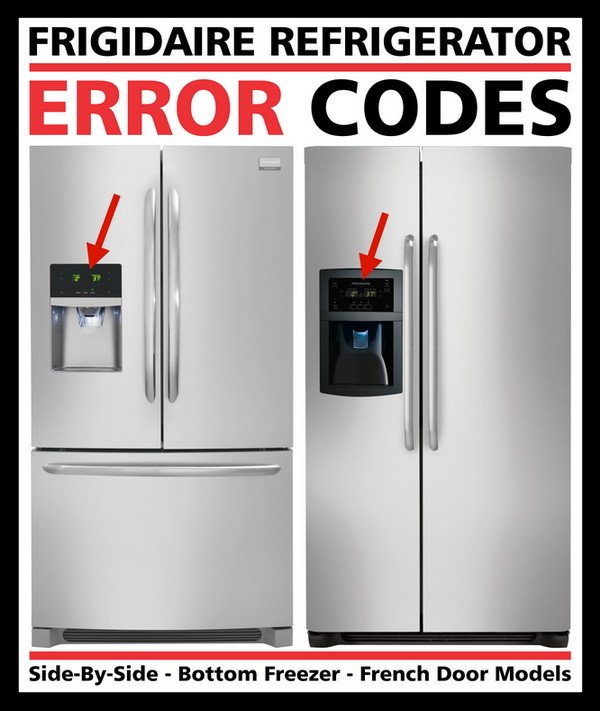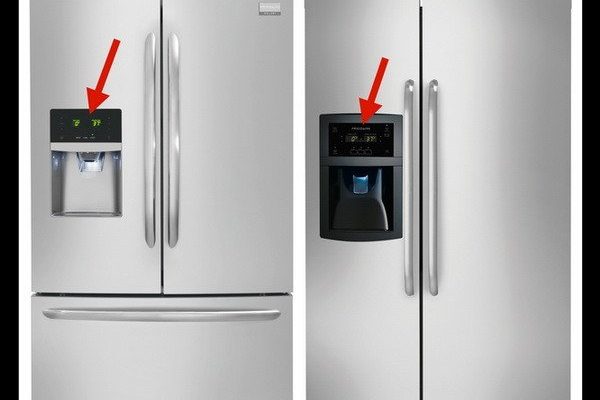
Think of it like your car’s check engine light. Sure, you can keep driving with the light on, but in the back of your mind, you’ll always be worried about what might go wrong. The E1 code is similar. It’s your fridge’s way of telling you something’s up and needs your attention. If left unchecked, it could lead to bigger issues down the line. So, let’s dive into what this error code really means and what steps you should take next.
Understanding Error Code E1
The E1 error code on a Frigidaire refrigerator is a bit like a secret message from the machine itself. It usually indicates a problem with the temperature sensor, which is a crucial component for keeping your food fresh. Imagine your sensor as a diligent weather forecaster inside the fridge, constantly monitoring the climate to ensure everything stays cool. If this sensor isn’t working right, your fridge might struggle to maintain the correct temperature.
You might be wondering, “What causes this error?” In most cases, it’s due to a faulty temperature sensor. Just like when a thermometer gives you a faulty reading, a malfunctioning sensor can mislead the fridge into thinking it’s cooler or warmer than it actually is. This could result in spoilage of food or inefficient energy use. The cause could be anything from wear and tear, an electrical issue, or even a manufacturing defect.
Now, you’re probably asking, “Is this something I can fix myself?” While a complete novice might struggle with fixing this personally, understanding the problem is half the battle. Knowing what the error means gives you the insight to decide whether it’s a simple fix or something that needs professional attention. But don’t worry, there are steps you can take before calling the repairman.
Steps to Troubleshoot the E1 Error Code
Here’s the good news: you can try a few troubleshooting steps on your own before considering expert help. First, try resetting your fridge. It’s much like rebooting your computer when it’s being buggy. Simply unplug your fridge, wait for about 10 minutes, then plug it back in. Check if the error code has disappeared; sometimes, a reset can clear minor glitches.
If resetting doesn’t work, examine the temperature sensor. Open your fridge and find the sensor, usually located behind a protective cover. Look for obvious signs of damage or disconnection. Think of it as checking your phone charger’s cable for breaks. If something looks off, you might need to replace the sensor. Replacement sensors aren’t too expensive, and swapping one out is like changing a light bulb, provided you’re comfortable with a screwdriver and following a manual.
Should these steps not resolve the issue, it’s best to contact Frigidaire support or a qualified technician. They’ll have the right tools and expertise to delve deeper. Remember, there’s no shame in seeking professional help—sometimes, it’s the quickest way to get your fridge back in top working order.
Preventative Measures to Avoid Future Errors
Now that you’re a bit more familiar with the E1 error, let’s talk prevention. Just like regular oil changes keep your car running smoothly, a little routine maintenance can help prevent error codes from popping up. Make sure your fridge is not overfilled, as this can block sensors and airflow. Think of it like trying to breathe through a pillow; airflow is crucial for temperature regulation.
Also, regularly clean your fridge’s coils. Dust and debris can accumulate over time, making your fridge work harder than it should. Use a soft brush or vacuum to gently remove any buildup. It’s a simple task that can prevent overheating and reduce the likelihood of error codes appearing.
Lastly, keep your fridge’s settings in check. Avoid extreme temperature settings that force the fridge to work overtime. By maintaining a moderate, steady temperature, you’re less likely to stress the components, which can lead to fewer errors and longer appliance life.
In conclusion, while it might be tempting to brush off the E1 error code, attending to it promptly can save you from a bigger headache in the future. By understanding the issue, trying some DIY troubleshooting, and maintaining your fridge, you can keep everything running smoothly and your food fresh. Remember, a little diligence today can prevent a big hassle tomorrow.
